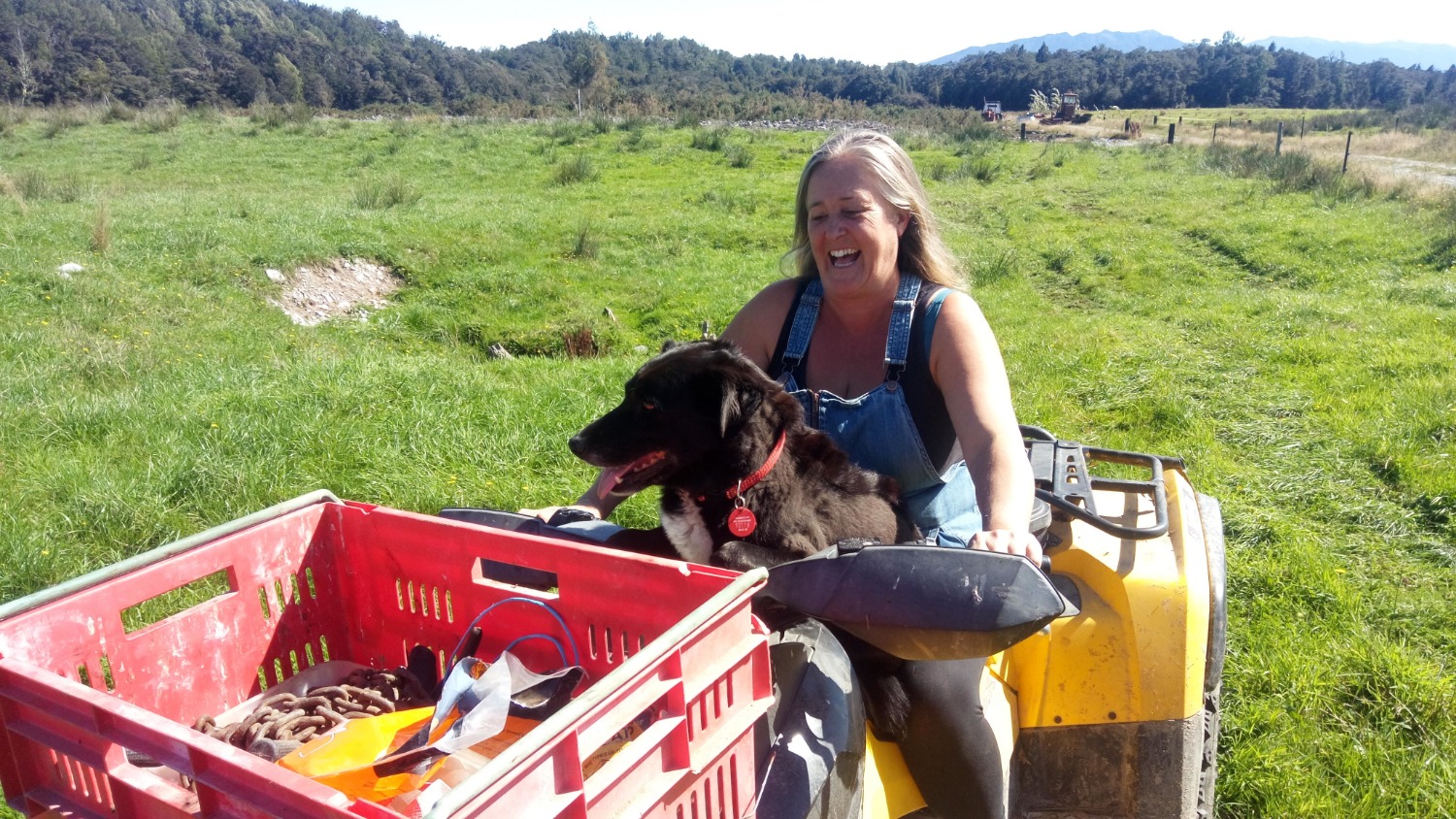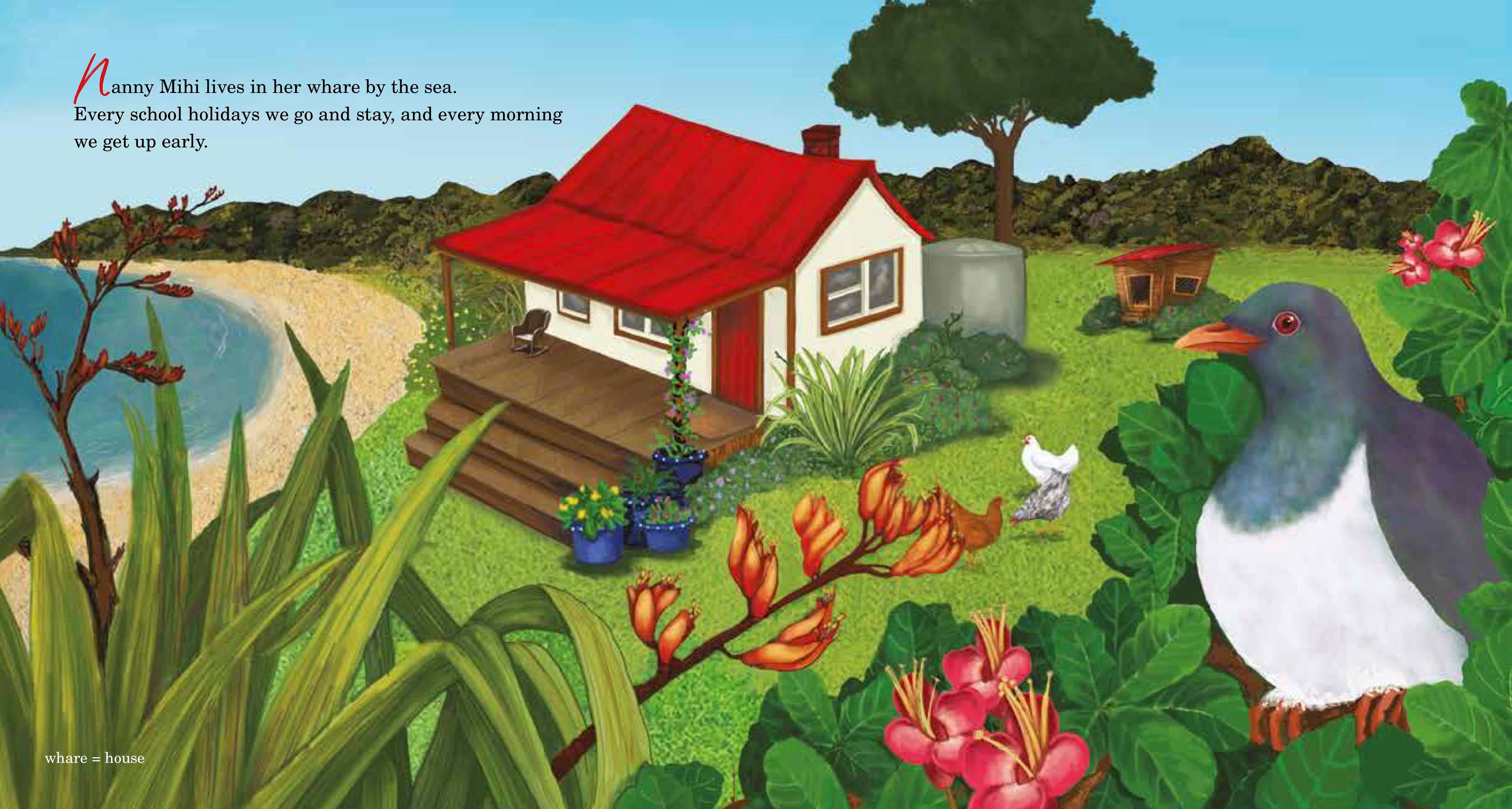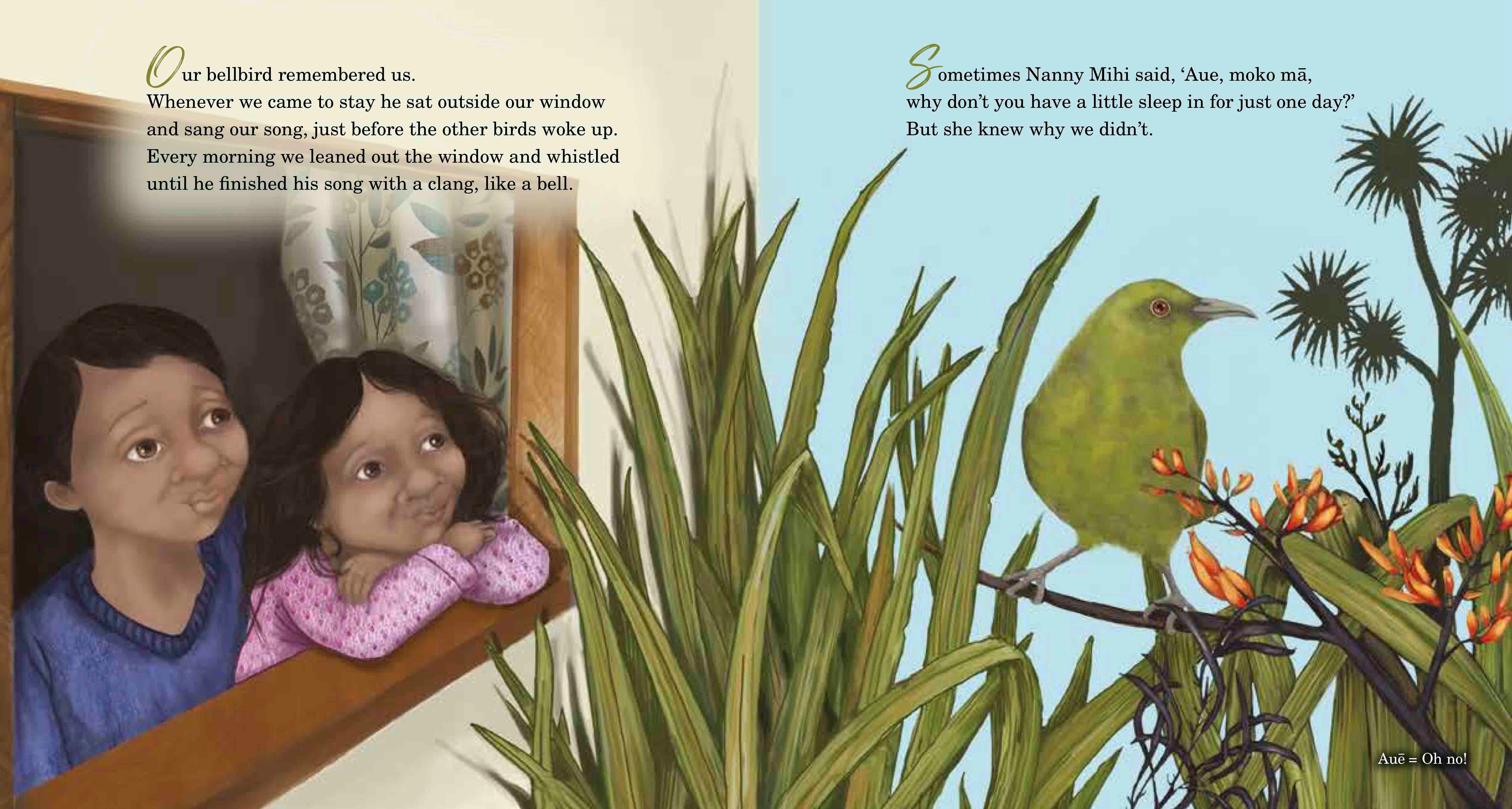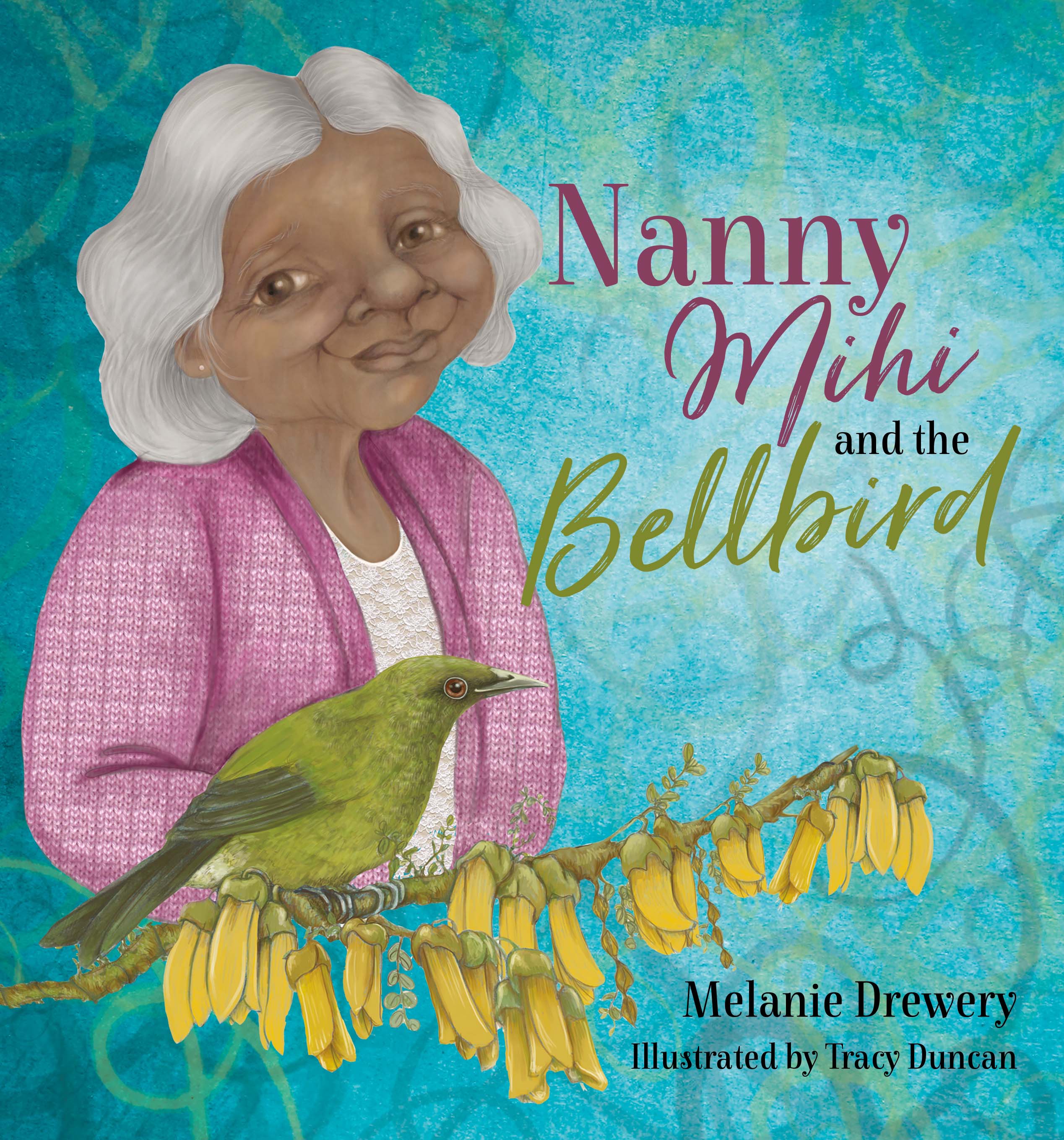Melanie Drewery has produced a multitude of books over the last two decades aimed at delivering te reo Māori and tikanga Māori in a gentle and positive way. Navana Matthews spoke to Melanie about the return of Nanny Mihi.
See here to read this interview in te reo Māori.

Melanie Drewery is best known for her Nanny Mihi series that explores the holistic relationship between a kuia and her mokopuna. Drewery’s new book Nanny Mihi and the Bellbird is book number six of the series with the previous book being published in 2005. This new book is a return of a classic character that provides a timeless message of sharing simple pleasures with whānau to a new generation of young readers.
Navana: How have your travels around the country impacted your storytelling and the story of Nanny Mihi?
Melanie: I don’t have a Nanny Mihi myself, but throughout the years we’ve had experiences that have inspired her stories. We used to have a goat that would get out all the time and that’s where Nanny Mihi’s Birthday Surprise came from. This latest book is about a bellbird that we used to have here on the West Coast but she disappeared for a wee bit and came back with a few babies.
N: When did you first consider yourself a writer? How did you get started?
M: I always wanted to be a writer. Right from high school I knew wanted to be a writer for children. I sent my first book away when I was 17 but they said no for some reason. But every year I kept sending stories away to try and get published and I would go to a lot of workshops and I would pick writers’ brains if they came to town or were speaking at the library and things like that. I ended up doing a diploma in freelance journalism and I think that made a big difference in me learning how to simplify things down rather than being too wordy.
But what really got me going was, whenever I went to a playcentre with my kids there were hardly any Māori children books. There were a few books like Patricia Grace’s The Kuia and the Spider which we loved and a few books on the legends of Māui. Otherwise there was nothing that just flowed naturally and that’s where I got the idea that I really wanted to write stories that have te reo occurring naturally without a glossary. I just wanted readers to figure out what it meant by reading the story repeatedly so it could become a part of your language and people could pick up phrases like ‘tino pai’ as opposed to people feeling like I was shoving it down their throats. So I feel like it was quite groundbreaking at the time because I had this drive to give something to my kids to read that really embraced tikanga Māori without being oversimplified.

N: What keeps you writing?
M: Having five kids has been a source of inspiration. Especially when they were kids because they were so hilarious. I love writing, and what I enjoy is writing positive and gentle stories. I still have a lot of stories that haven’t been published for one reason or another and there’s still a few ideas brewing as well. I suppose at this time of my life I have a bit more space to have contemplative thoughts which is important because you need that time and space for a story to grow and let it sit in your brain before you stop and pay attention to it. There are so many good Māori writers out there now so I don’t feel like I’m trying to fill a gap but I still want to contribute as a writer.
N: What inspired Nanny Mihi?
M: I had a friend who was a grandma and her name was Mihi so that’s where the name came from, I also think a lot of other people’s nannies that I had met around the place inspire the Nanny Mihi character as well, they sort of just took everyone in. So I think it’s that kind of character that is really relatable for Māori children.
But I’d say it’s mostly based on my mum who was a really cool grandma and the things that we’d do together with my children when they were little. I think in today’s age it’s so driven for people to do things that cost money or are technological or sporty and the simpler things like creating a beach combing with your children like the book Nanny Mihi and the Rainbow get overlooked. So I think the inspiration for the Nanny Mihi stories is to create something gentle and positive.
N: Why the comeback for Nanny Mihi? Is she still relevant?
M: I had a break from writing these stories when my kids were teenagers. But now my kids have left home so this is like me getting back into writing. In terms of Nanny Mihi’s relevance, I hope she can be timeless because I hope there are still families who still want to do those quieter things with their kids like grow a garden and take time in nature. I really hope Nanny Mihi proves herself with this new book and that enough people can sort of go, ‘Oh cool, Nanny’s back!’ or new people discover her.
I still do a few primary school visits and a lot of the kids haven’t seen Nanny Mihi before and when I read her to them they are really excited that it’s something that they haven’t seen before, so I am hopeful.

N: Should Maori children’s literature remain centered around language revitalisation or should it expand to encompass new storylines?
M: I think we need a lot more stories and I think it needs to be a mix of both creating new stories and focusing on Māori language education, because there are still a lot of areas in New Zealand where people don’t encounter much Māori aside from learning the numbers and the colours at school as well as a few greetings. So I think there are still quite a few areas that need less full-on stuff.
N: Pen and paper or computer? Music or silence? Wait for the muse or make an appointment? How do you do your writing?
M: I always write with pencil first and then when I get to the computer phase I start to tutu a bit more. When I was writing three books or so a year I use to have a rule where I’d write from bed and nobody was allowed to talk to me it was kind of like my sanctuary and at times if I was stuck I would have a nap and afterwards I’d know exactly what I wanted to write. I need to write from a quiet space and ditch the phone and make sure nobody can interrupt my thoughts. Usually I do my writing from a sunny couch now, it’s terribly difficult writing on a grotty day.
As for the ‘wait for the muse or make an appointment’ question I tend to do both. Whenever I have a little bit of an idea I write it down in my notebook. I have been working on some of those stories for years and I go back over them and try and make it happen and they get there eventually.
N: We have a regular feature, ‘The Books that Formed my Childhood.’ What are some children’s books that have been particularly influential on you as you grew up?
M: It’s quite hard to think of what books had influenced me growing up because I read so much as a small child but if I had to pick one it would be the book called The Monster at the End of this Book’ I absolutely loved it, it was quite meta-textual and it would say things like ‘don’t turn this page’ – I enjoyed that tension of the wait and see. It was an amazing book.
You can read a version of this interview in te reo Māori here.

Nanny mihi and the bellbird
By Melanie Drewery
Illustrated by Tracy Duncan
Oratia
RRP $19.99
Navana Matthews
Navana is currently doing his honours at Victoria University of Wellington with a focus on Māori language acquisition. During his time at Victoria University Navana has become an advocate for language planning and policy for te reo Māori and one day hopes to add on to the revitalization of te reo Māori which is currently happening. Navana is also critically aware of the challenges faced by rangatahi, and is an avid believer in the ability of Māori literature to connect/reconnect rangatahi Māori to their culture.



